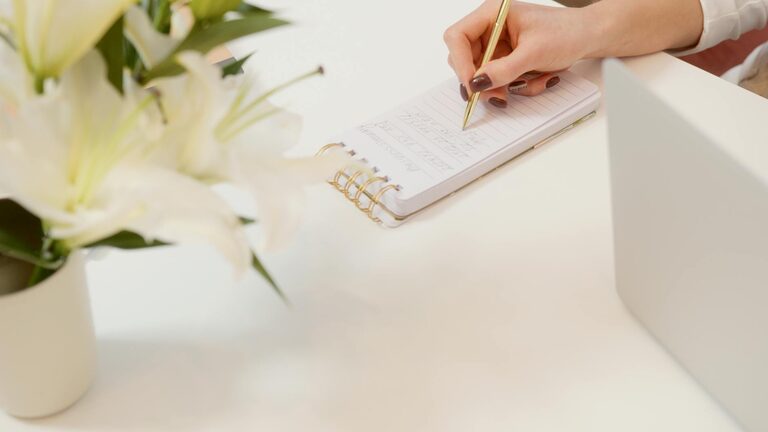How to Journal for Clarity and Focus: A Step-by-Step Guide

Journaling is a powerful yet accessible tool that can help you gain clarity and improve focus in your everyday life. By putting your thoughts on paper, you can better understand your emotions, prioritize tasks, and sharpen your mental clarity. If you’re new to journaling or want to use it more effectively, this guide will walk you through practical steps to journal for clarity and focus.
Why Journal for Clarity and Focus?
Before diving into how to journal, it’s helpful to understand why journaling is effective. Writing can clear the clutter in your mind, organize your thoughts, and reduce stress. When you take time to reflect and document your ideas or challenges, you can identify what’s important and make better decisions. Additionally, journaling fosters mindfulness—a way of becoming fully present that naturally enhances focus.
Getting Started: What You Need
Journaling doesn’t require fancy tools. Here’s what you need to begin:
– A notebook or journal: Choose something you enjoy writing in.
– Pen or pencil: Whatever you prefer for smooth writing.
– Quiet space: Find a comfortable spot free from distractions.
– Time: Start with 5-10 minutes a day and adjust as you go.
How to Journal for Clarity and Focus: Step-by-Step
1. Set an Intention
Before writing, take a moment to set your journaling intention. Ask yourself: What do I want to achieve with this session? Is it to clear my mind, plan my day, or reflect on a specific issue? Setting an intention helps guide your writing and keeps you focused.
2. Start with a Brain Dump
Begin by writing whatever is on your mind. Don’t worry about grammar or structure—just let your thoughts flow freely. This brain dump clears mental clutter and surfaces hidden concerns or ideas.
Tips for an effective brain dump:
– Write nonstop for 5 minutes or more.
– Include everything from worries to plans.
– Don’t judge your thoughts; be open and honest.
3. Organize and Prioritize
After emptying your mind, review what you wrote. Highlight or underline key ideas, tasks, or recurring themes. Then, prioritize what needs your attention.
You can use simple techniques like:
– Bullet points: List important tasks or insights.
– Numbering: Rank priorities from highest to lowest.
– Mind maps: Draw connections between ideas.
4. Set Clear Goals or Next Steps
From your prioritized list, identify actionable items. Writing down clear next steps gives your brain a focused direction.
Example:
– “Complete project outline by Friday.”
– “Call mentor for advice on career.”
– “Practice mindfulness meditation for 10 minutes.”
5. Reflect and Close Positively
Wrap up your session by reflecting on your progress or mindset. Write something encouraging or a positive affirmation to boost motivation.
Example affirmations:
– “I am capable of managing my tasks effectively.”
– “Each step I take brings me closer to clarity.”
– “I focus on what matters most each day.”
Additional Journaling Techniques for Focus
Gratitude Journaling
Spend a few minutes listing things you’re grateful for. Gratitude shifts attention away from distractions and enhances mental clarity.
Time-Blocking or Scheduling
Use your journal to allocate time blocks for tasks. Physically writing your schedule helps reinforce commitment and reduces overwhelm.
Highlight Distractions
Write down recurring distractions you notice during your day. Awareness is the first step toward minimizing interruptions.
Tips for Maintaining a Journaling Habit
– Be consistent: Aim to journal daily or several times a week.
– Keep it short: Even 5 minutes can make a difference.
– Make it enjoyable: Use colors, stickers, or different pens if that motivates you.
– Be kind to yourself: If you miss a day, don’t stress—just resume the next time.
– Experiment: Try different journaling styles or prompts to find what resonates with you.
Sample Journaling Prompt for Clarity and Focus
If you feel stuck, try using prompts like:
– What is taking up mental space right now?
– What one task would make the biggest difference today?
– What distractions can I avoid to stay focused?
– How do I want to feel by the end of the day?
– What small step can I take to move forward?
Conclusion
Journaling for clarity and focus is a simple yet impactful practice. By setting aside a few minutes regularly to write down your thoughts, priorities, and goals, you create space for a clearer mind and stronger concentration. Remember, it’s not about perfection—just progress. Give journaling a try and watch how it transforms your mental clarity and focus over time.
—
Ready to start journaling? Grab your favorite notebook and begin your journey toward a calmer, more focused mind today!
